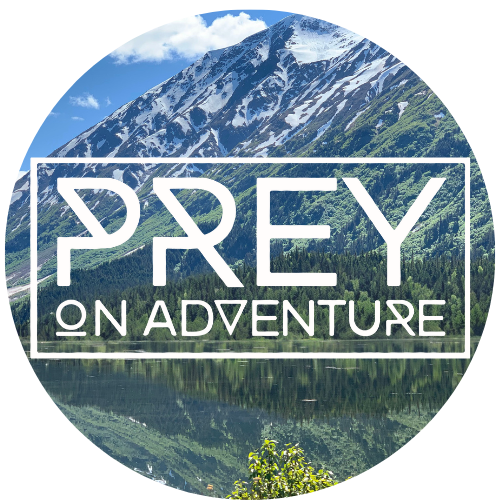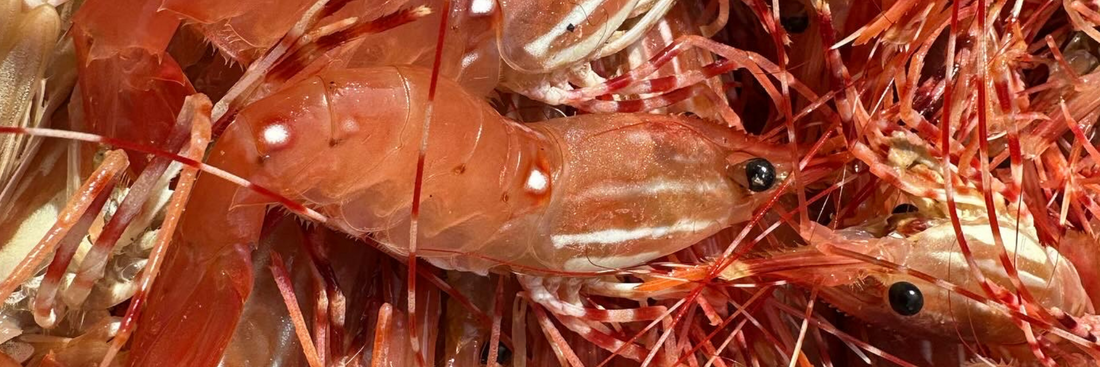Shrimping in Prince William Sound: A Comprehensive Guide
Prince William Sound, nestled in the south-central region of Alaska, is a haven for outdoor enthusiasts. This stunning area, named by British explorer George Vancouver in honor of Prince William IV, boasts an intricate coastline of fjords, islands, and glaciers. The incredible beauty of the sound is breathtaking each time we take the boat out to explore. The waters are surrounded by towering mountains, which block out many of the rolling waves from the open ocean, often resulting in waters as calm as glass. However, don't let that fool you. When the wind picks up, it can get rough out there quickly. Always keep an eye on the weather and plan accordingly. One of our favorite activities in the sound is shrimping. Nothing beats the thrill of pulling up pots loaded with sweet, succulent spot shrimp.

The Shrimp of Prince William Sound
Prince William Sound is home to several species of shrimp, with the most sought-after being the spot shrimp (Pandalus platyceros), also known as spot prawns. These large, flavorful shrimp are prized for their sweet taste and tender texture. Other species found in the sound include coonstripe shrimp (Pandalus hypsinotus) and pink shrimp (Pandalus borealis). Be sure to bring a little butter and some minced garlic to fry up some shrimp right from the ocean. It doesn’t get any fresher than that!

Shrimping Season and Patterns
Shrimping season in Prince William Sound typically runs from April through September. During this period, shrimp migrate to different depths and areas based on factors like water temperature, food availability, and breeding cycles. Early in the season, you may find shrimp in shallower waters (150-250 feet), while later in the season, they tend to move deeper (300-600 feet). I like to drop my pots on shelves vertically in orientation to the drop-off rather than horizontally. For instance, if I am in a two- or three-pot area, I will drop one pot at 250 feet, the next at 300 feet, and the next at 350 feet. I usually drop on the same line, and I will discuss that in more detail in the techniques section.
Habitat and Food Sources
Shrimp in Prince William Sound thrive in areas with rocky or sandy bottoms, where they can find ample food sources. They primarily feed on plankton, small fish, and organic debris. This diet contributes to their unique flavor, which is a favorite among seafood lovers. Look for areas with fresh water running into the salt, like a large waterfall, river, or glacier creek. These freshwater sources bring in lots of debris shrimp like to eat.

Gear and Techniques for Successful Shrimping
To successfully harvest shrimp in Prince William Sound, you'll first need to get a shrimping permit from the Alaska Department of Fish and Game. You will also need the right gear and techniques. Here's a comprehensive list to get you started:
1. Shrimp Pots: Shrimp pots are essential for capturing these crustaceans. These pots, typically made of wire mesh, are baited and dropped to the seafloor. Look for pots with an entrance funnel and escape ports to ensure legal and sustainable shrimping.
2. Bait: Effective bait is crucial for attracting shrimp. Common choices include fish heads, cat food, and commercially prepared shrimp bait. Ensure your bait is securely fastened in the pot to prevent it from being washed away by currents. Consider getting a few bait barrels to secure the bait in the pots. These look like a wire-meshed cylinder slightly bigger than a 16 oz beer can. The top screws on and off for adding the shrimp bait, and the top has a clip on it to help fasten it to the pots. Scents are an important part of attracting shrimp into the pot. You could have the best shrimp pellets in the world, but if the shrimp can’t find it, it won’t matter. For scents, I like to use tuna or cat food in a can with a few holes poked in the top. I also save all innards from the fish we catch as those make for good scents as well.
3. Rope and Buoys: Use a strong, durable rope to lower and retrieve your shrimp pots. From the buoy down, I use a thousand feet of lead-lined rope attached to 500 feet of floating plastic rope. I attach the two ropes with a strong stainless-steel carabiner with loops tied on each end of the ropes. The lead-lined rope allows the line to sink and prevents the slack from floating to the top and getting stuck in boat motors cruising by. The floating line is for having multiple pots on one line and so the slack between the pots won’t sink and get caught in the rocks. Attach a buoy to the end of the rope to mark the location of your pots. Buoys should be brightly colored and clearly labeled with your name and address, as required by regulations.
4. Depth Finder: A depth finder is invaluable for locating the ideal depths for shrimping. This tool helps you identify the contours of the seafloor and find the best spots to drop your pots. I like to look for areas with a steep drop-off. Also, observe the land in front of your chosen drop site. If you see steep rocks and cliffs going into the water, it's likely similar underwater. Conversely, if there's a gradual slope with sand and pea gravel, that's probably what the underwater terrain looks like too.
5. Puller: Manual or electric pot pullers can save you considerable effort when retrieving your pots from deep waters. These devices help you efficiently haul your catch to the surface. While it's possible to pull pots by hand, an electric pot puller will save you time, effort, and a lot of unwanted back pain. I've had to pull up my lines by hand before when I blew a fuse in the electric puller, and it was no fun! This reminds me—bring extra fuses for the pot puller.

Step-by-Step Shrimping Process
1. Preparation: Begin by assembling your gear and selecting your bait. Ensure all ropes and buoys are in good condition and clearly marked.2. Choosing a Location: Use your depth finder to locate areas with rocky or sandy bottoms within the preferred depth range for the season. These habitats are where shrimp are most likely to be found.
3. Dropping the Pots: Bait your shrimp pots and lower them to the desired depth. Space your pots apart to cover a larger area and increase your chances of a successful catch. Make sure your pots fall correctly. For example, not on the top or the side, as it will render it useless.
4. Waiting Period: Allow the pots to sit on the seafloor for several hours to overnight, giving the shrimp ample time to enter the pots. I usually wait for at least one low tide cycle. The flow of the tides helps spread the scent, but the low tide, when there isn't much current, allows the shrimp to move freely and enter the pots with ease.
5. Retrieving the Pots: Use your pot puller to retrieve the pots. Check your catch, and ensure any undersized shrimp are carefully released back into the water to support sustainable shrimping practices. Have a bucket to place the shrimp in and record your harvest on the shrimping permit.
6. Processing Your Catch: Once you've harvested your shrimp, process them right away. To do this, place one hand on the tail where it meets the body and the other where the body meets the tail. Twist in opposite directions, like giving someone an Indian burn. Promptly place them in a gallon zip-lock bag and then in a cooler with ice to preserve their freshness.
Clean and prepare your shrimp as soon as possible for the best taste and texture. As we like to say, "Shrimp don't keep!"—which is just an excuse to eat all the shrimp you can in one sitting!
Tips for a Successful Shrimping Trip
Check Regulations: Always check local shrimping regulations before heading out. These rules can include pot limits, size restrictions, and seasonal closures designed to protect shrimp populations.Weather Conditions: Pay close attention to weather forecasts. Prince William Sound can experience sudden changes in weather, so being prepared is essential for safety.
Conservation Mindset: Practice sustainable shrimping by adhering to regulations and respecting the marine environment. Avoid overfishing and contribute to the long-term health of shrimp populations.
Expect Other Creatures: One of the greatest surprises is catching other aquatic creatures in your pots. You may catch small fish, snails, starfish, crabs, or my personal favorite, octopus! Make sure to check the regulations on what species you are allowed to keep.
Shrimping in Prince William Sound is not only a rewarding way to enjoy Alaska's natural beauty, but it also provides an opportunity to gather some of the finest shrimp available. With the right gear, techniques, and respect for the environment, you can look forward to successful and sustainable shrimping adventures in this pristine aquatic paradise.


